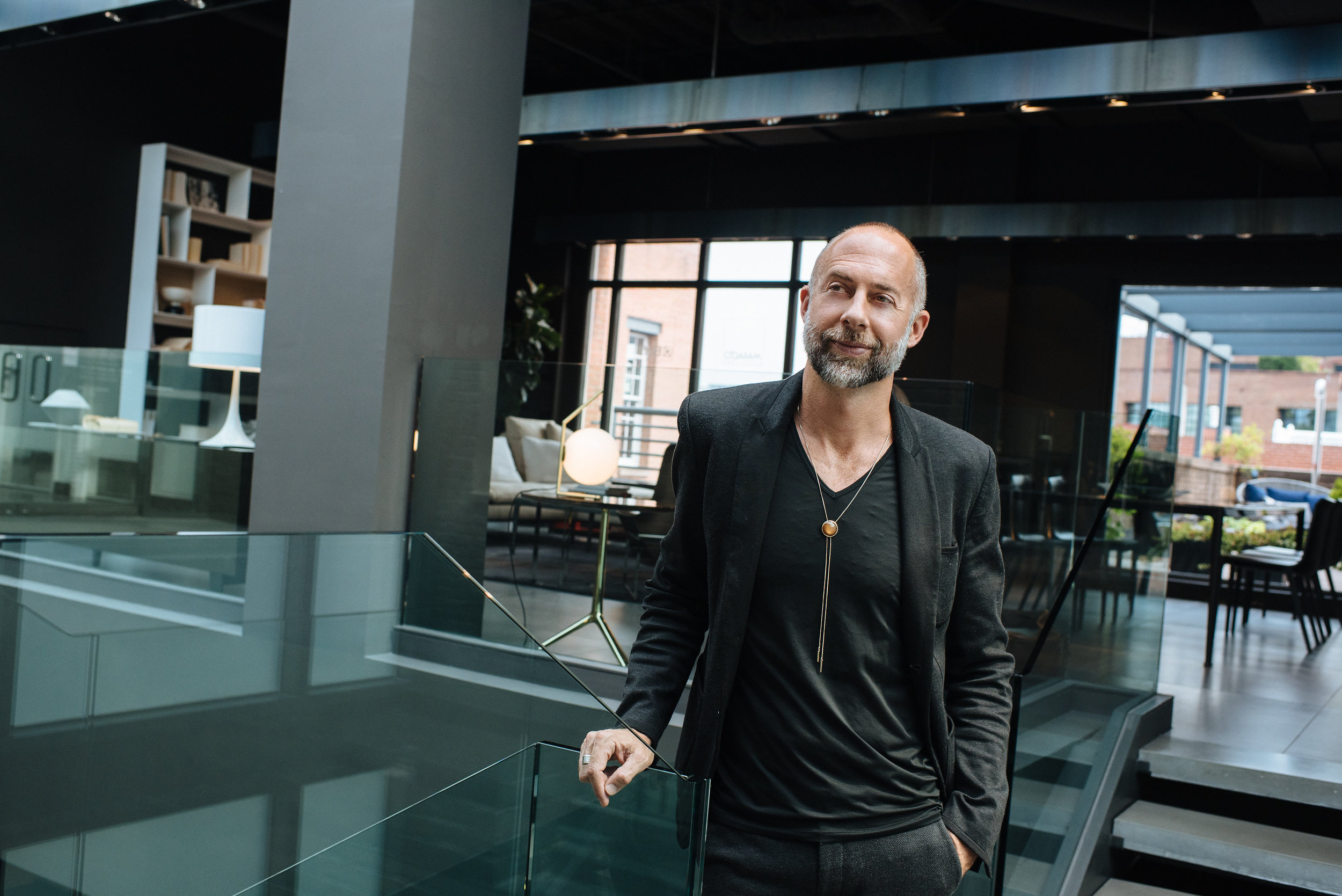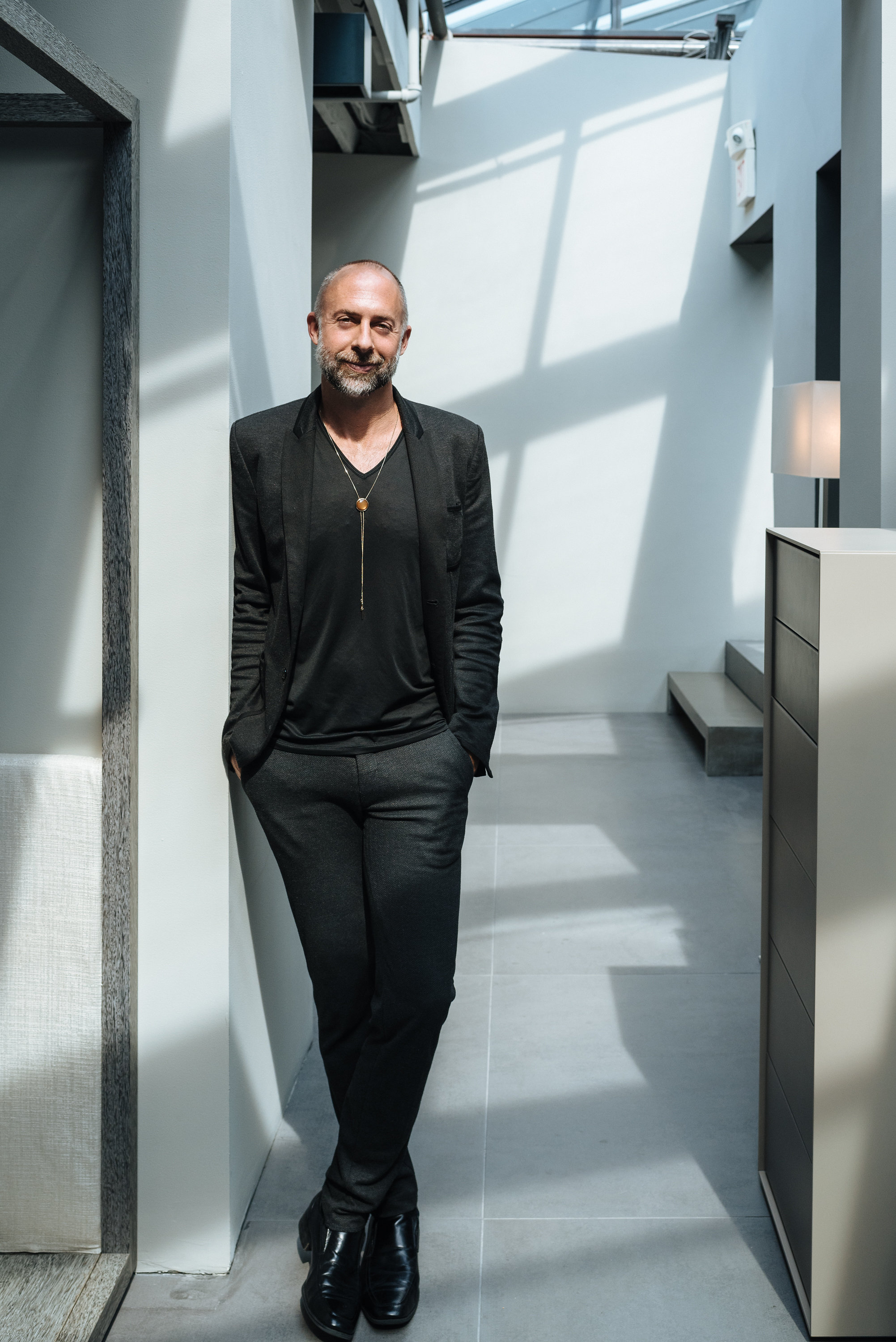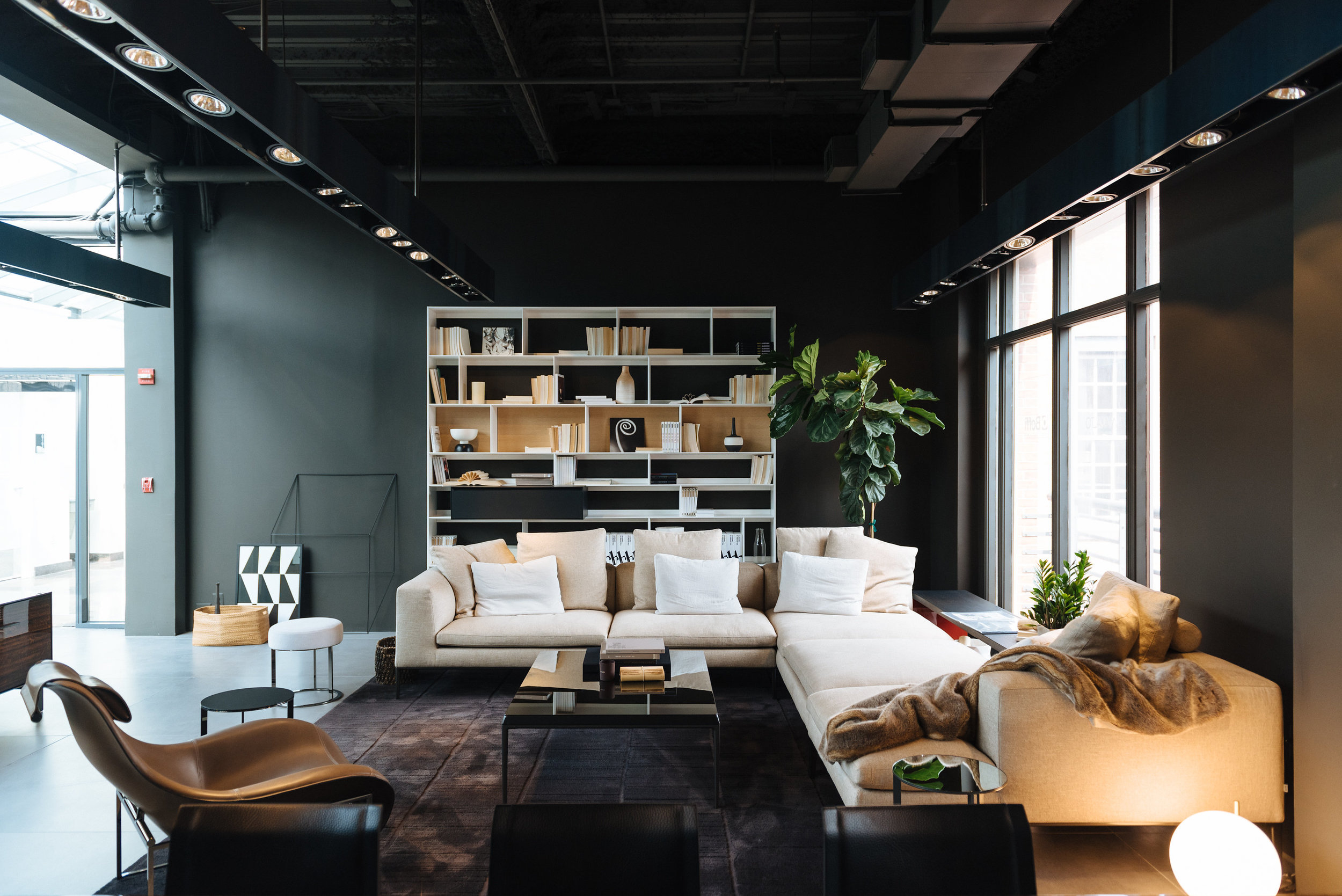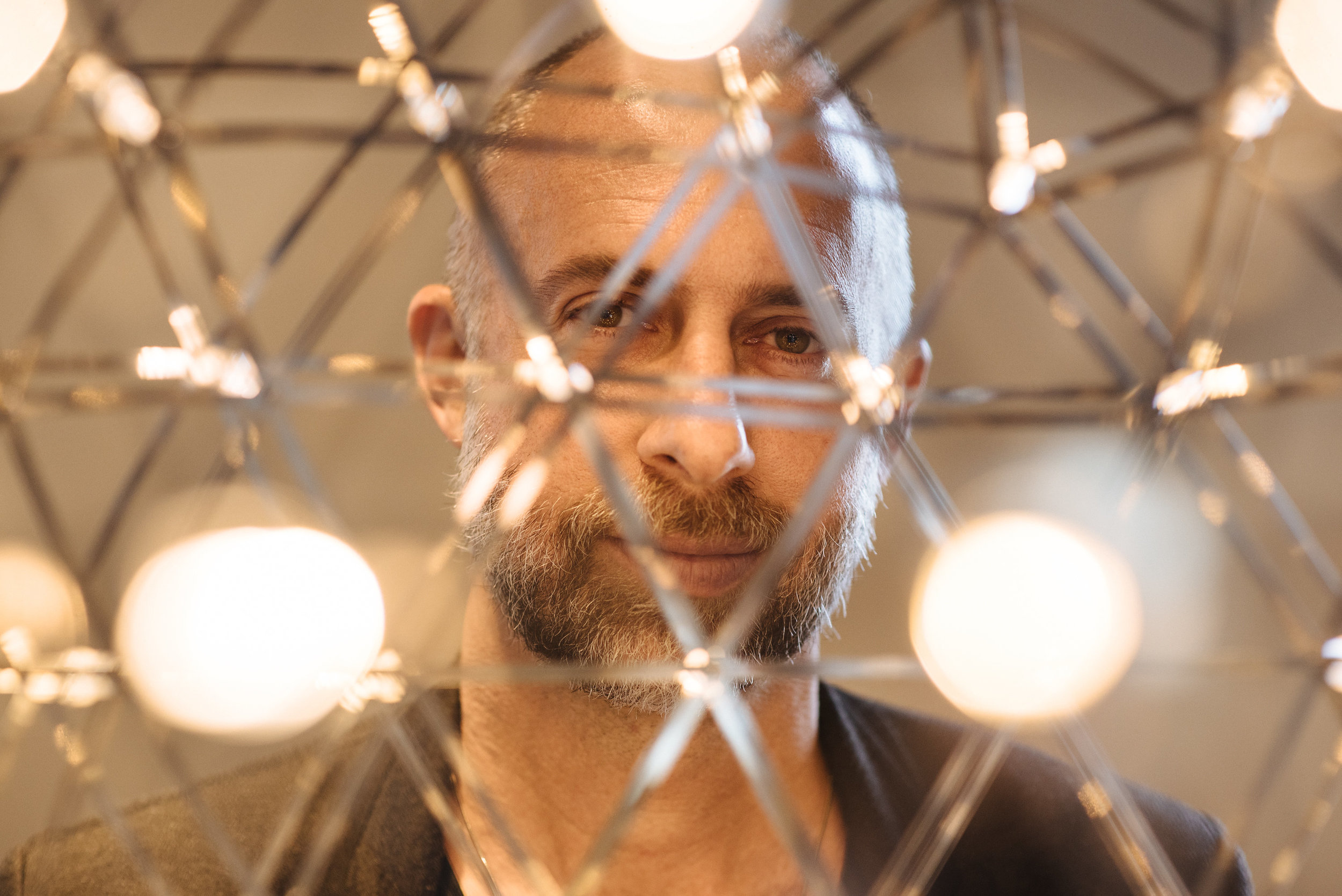‘I Think Georgetown Is the Only Destination for High-End Design’
After throwing enough half-million-dollar bar mitzvahs and parties in $20 million Miami penthouses where he couldn’t touch the walls, Brian Fell realized most people—regardless of income—need help with their interiors.
Raised in southern California, Brian owned his own graphic design firm in Los Angeles before moving to Miami and starting a landscaping and horticulture firm. He fell into interiors naturally as he produced high-end events.
‘All of these homes were gorgeous, but the interiors were not matching the price point of the home.’
Brian began working for a Brazilian design firm, and was eventually asked to assist with their Georgetown location. He didn’t look back.
‘I knew Florida wasn’t for me. It felt like I was living in a weird, warped dream of California. As soon as I knew I was going to DC for one week, I told my roommate I probably wouldn’t be coming back. That week turned into two, which turned into a month, and then they asked me to transfer to DC. I went home for one weekend to pack my things.’
Today, Brian is the showroom manager for B&B Italia in Cady’s Alley—otherwise known as the Georgetown Design District. With that location and brand recognition comes consumer education.
‘The biggest misconception is that, because we’re the most elite showroom in Georgetown, we’re out of touch and only for multi-millionaires. If a young couple comes in, I know they’re not coming with a black Amex. We have them focus on a few key pieces, reuse some of their existing pieces, and start a collection without starting from scratch. They start seeing the long-term investment of a sofa or gorgeous marble dining room table that is going to go to the next home, and they respect us for working with them. Those smaller sales are really rewarding because you feel like you just got into their head a little bit.’
For Brian’s customers, the showroom experience is key to the decision-making process. B&B Italia is curated like a home rather than a store, with sale tags, and excess colors and options removed to eliminate distractions.
‘The space keeps people inspired, and it’s a peaceful place to work on a project. The focus is back on the customer’s home.’
Or homes, plural, as is often the case. At B&B Italia’s price point, many of Brian’s customers are a triple threat—owning beach and mountain homes, in addition to their DC residences.
‘My clients think I live like them, and I have my own beautiful wish list, but I can’t afford myself,’ Brian says, laughing. ‘These people lead fascinating lives. You go out for drinks, they have you over at their home, and you get to know their kids, because they’re making key decisions, too. It’s not just, ‘Mom and Dad, what can I paint my room?’ They’re involved in the $30,000 living room sofa purchase. I wasn’t even allowed to go shopping with my parents. The wealthier clients, their time with their children is spent differently. I think it’s fascinating.’
Regardless of income and square footage, Brian says every client wants to be heard.
‘You can’t ignore that most clients aren’t going to get rid of everything. And you have no idea where this stuff comes from, if it’s from a relative or a loved one. If a client has art or a rug that they already own, you have to embrace that and work with it and show them how their current palette can evolve into something different, versus treating it like a roadblock.’
That’s not to say Brian doesn’t have his own kill list of design faux pas. High among them: Giant pillows, and sofas that look like ‘marshmallows.’
‘They fool the market into believing this is what soft is. It’s not soft, it’s going to break your back. You should just get a chiropractor as you buy the sofa. And it looks like it’s 20 years old after a week. You’d need a professional fluffer.’
Brian takes issue with American furniture proportions, too—typically much larger than necessary.
‘The back end of a sofa or the girth of an arm can be twice the size on the exact same sofa at different design firms, but now with the added cushioning, everything is out of scale in that room and the arm chairs can look dwarfed. It’s not about selling or designing larger things; it's about what looks better and feels more welcoming. Small spaces don’t necessarily mean small sofas or tiny tables, as portions are everything.’
Inviting Brian to your home is a lot like having your chef friend over for dinner. There’s an unspoken pressure.
‘My friends all want me to come over to offer advice, but they’re also very nervous,’ says Brian, whose ‘lawyer friends’ give him grief for his own design choices. ‘They come over and are like, ‘Brian, it’s so hard to read in your house.’ My argument is, well, we’re not reading—we’re having a glass of wine. You’re not reading in every single room. And when you’re having dinner, you’re not writing a book. It shouldn’t be that bright.’
Brian’s house is always flux. He follows the same message he offers his clients—focus on a room, on a collection, on the next step, and make it fun. He says shopping and interior design shouldn’t be the difficult experience they’re often made to be.
His attitude largely stems from a true passion for a design, and a company rooted in high-quality craftsmanship. Brian travels to B&B Italia’s Milan headquarters annually—always a source of inspiration.
‘Italy is just pushing better, better, better. I’ve been in hotels there that are so luxurious and beautifully designed, I felt like Pretty Woman. I felt like I needed to wear a big hat. From the cars to their furniture, the Italians are true artisans and no one comes close.’
Perhaps, but the Georgetown Design District is in class of its own within the District. Home to more than 30 design, fine home furnishings and accessory stores, Brian says it’s the only true destination for high-end interior design retail and art in the city.
‘I’ve been here for five years and a lot of people still don’t know about the Design District. But once you’re here, you can knock out every inch of your home, and have lunch—and a doughnut. Between Cady’s Alley and upper Georgetown, it’s all here.’
You can even touch the walls.






